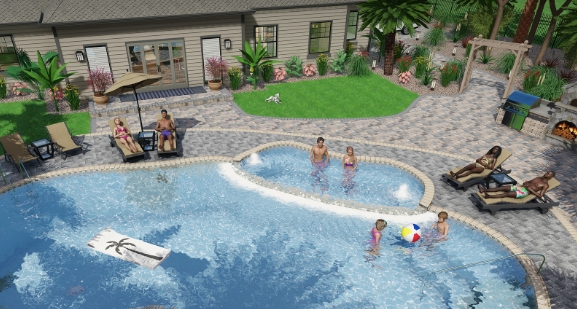Advancements in technology have greatly influenced the field of landscape architecture, with new tools and software shaping the way designers plan and create outdoor spaces. In 2020, realtime technology is taking center stage, setting new standards and possibilities for the future of landscape architecture.
Realtime Visualization Tools Enhance Design Process
Realtime visualization tools allow designers to see their designs come to life instantly, providing a more immersive and interactive experience. With the use of 3D modeling and virtual reality, designers can explore different design options and make changes on the spot, leading to more efficient and creative solutions.
Improved Collaboration and Communication
Realtime technology also enhances collaboration between designers, clients, and stakeholders. By being able to present and share designs in realtime, everyone involved in the project can provide feedback and make decisions more effectively. This streamlines the communication process and ensures that everyone is on the same page throughout the design process.
Dynamic Design Capabilities
Realtime technology offers dynamic design capabilities that were not possible before. Designers can now create animations and simulations of how their designs will look and function in different conditions, such as different times of day or seasons. This allows for a more comprehensive understanding of the design and how it will impact its surroundings.
Greater Accessibility and Inclusivity
The use of realtime technology also makes landscape architecture more accessible and inclusive. Clients and stakeholders who may not have a background in design can better understand and engage with the design process through interactive and visual tools. This ensures that everyone’s input is valued and incorporated into the final design.
Sustainability and Resilience
Realtime technology is also helping landscape architects design more sustainable and resilient landscapes. By simulating how a design will respond to different environmental factors, such as climate change or natural disasters, designers can create more resilient landscapes that can adapt and thrive in changing conditions. This focus on sustainability and resilience is crucial for the future of landscape architecture as we face increasingly complex and unpredictable challenges.
In conclusion, realtime technology is revolutionizing the field of landscape architecture in 2020 and setting new standards for design practices. With its ability to enhance the design process, improve collaboration, offer dynamic design capabilities, increase accessibility, and promote sustainability and resilience, realtime technology is shaping the future of landscape architecture in exciting ways. As designers continue to explore and harness the potential of this technology, we can expect to see even more innovative and transformative designs in the years to come.

